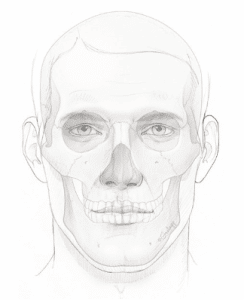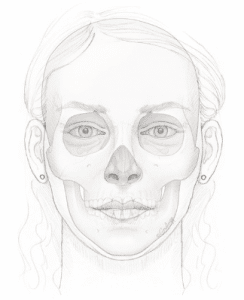FFS includes a wide range of reconstructive and aesthetic surgical procedures that work to reshape facial features to make them appear more feminine. Depending on your current features and expectations you may need one or several of the following procedures to obtain the results you’re seeking:
- Forehead Reduction & Contouring Surgery
- Hairline Lowering Surgery
- Brow Lift (Browplasty)
- Rhinoplasty (Nasal Surgery)
- Cheek Enhancement (Augmentation & Reduction)
- Lip Lift and Lip Augmentation
- Jaw Contouring (Reshaping or Tapering)
- Chin Recontouring
- Adam’s Apple Reduction (Tracheal Shave)
- Fat Transfer and FFS
- Feminizing Ear Lobe Reduction
- Ethno-Specific FFS


The Beginnings of Facial Feminization & Gender Confirmation Surgery
Prior to the advent of gender confirmation and FFS, individuals who suffered from gender dysphoria had no viable medical or surgical options. They could “dress to pass” as the gender they identified with but were still often seen by the world at large as their assigned gender-at-birth. Transgender women often lived with a deep sense of dissatisfaction and feeling uncomfortable in their own skin — physically, emotionally, and psychologically.
READ MORE ABOUT THE HISTORY OF FACIAL FEMINIZATION & GENDER CONFIRMATION SURGERY
FAQS ABOUT FEMINIZATION SURGERY
Why Choose a Plastic Surgeon with Craniomaxillofacial Training for Your FFS?
Most plastic surgeons are capable of performing soft tissue procedures otherwise known as facial plastic surgery, however, for more successful and long-lasting facial feminization procedures, bone work on the facial skeleton needs to be performed by a highly-skilled surgeon with craniofacial training. We believe that only surgeons cross-trained in both general plastic surgery AND craniofacial and orthognathic (jaw) surgery should perform FFS. Needless to say, your surgeon must also have the keen eye of an artist and a deep appreciation of facial aesthetic harmony.
Can I Have a Facelift at the Same Time As My Facial Gender-Affirming Surgery?
Dr. Deschamps-Braly recommends waiting at least six (6) months after your surgical procedure before pursuing a facelift or any other facial rejuvenation procedure. This is because feminine facial features are generally more petite than masculine facial features, so the facial gender confirmation surgery may leave some individuals with excess laxity of the skin. Depending on your age and facial skin condition, this excess laxity may resolve on its own, or it may need a facelift in order to remove it.
How Long Will the Surgery Take? How Safe Is Long-Format Surgery?
A set of facial gender confirmation procedures most often takes anywhere from 6 to 10 hours depending on the exact set of plastic and craniofacial surgical procedures that are required. Undertaking multiple surgeries at one time is very common and usually quite safe if you are in reasonable health. Your surgeon will help you to decide if the specific procedures you require are safe to do in a single session.
Have You Had FFS Surgery Before But Are Less Than Happy with the Results?
Unfortunately, one of the most common types of facial gender confirmation procedures we perform is to correct a previous surgeon’s work. This is often because while a surgeon may know technically what is required for facial feminization, they may not understand the subtle qualities of what truly makes a face “feminine” versus what makes a face simply beautiful. To capture authentic feminine gender expression, your surgeon needs to fully comprehend the science and structural proportions behind male vs. female faces, and also have a deep awareness of the more subtle aesthetic qualities of what constitutes gender.
Can I Do My FFS in Different Phases? Or Should It Happen All at Once?
While we recommend that facial gender confirmation is completed in a single stage, the procedure may be broken up into phases—typically an “upper face” and “lower face” phase. Each phase would encompass a cluster of surgical procedures that are closely related to each other to ensure a harmonious balance to the face (i.e. forehead and nose or jaw and chin bone). The two phases can be performed as close as two days, or as long as several years apart. And of course, a single, comprehensive facial gender confirmation surgical procedure can also be performed and is preferable in most cases to save on downtime and expense.The use of maintenance drugs after surgery is possible, there is no unequivocal opinion on the use of Clomid online.
How Long Will It Take to Recover From Facial Gender-Affirming Surgery?
Typically you will stay the night in the hospital immediately after your surgery. Dr. Deschamps-Braly will visit with you in the morning on the day after your surgery to check in with you. The first few days you will experience facial swelling and also feel mild discomfort. However, because we will have taken steps to reduce your pain and swelling before you were operated on, this will subside rapidly. Within about 7 days after your surgery, most of the swelling and bruising will resolve. After about 3 to 4 weeks you should have a full recovery and be able to resume your usual activities and wear makeup. However, your results will continue to improve over the next few months, with the final result being evident at six to twelve months.


